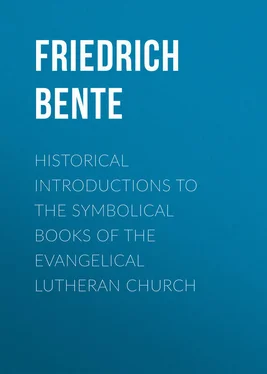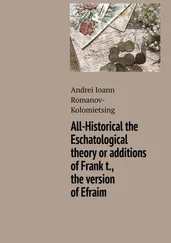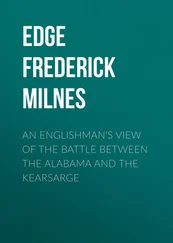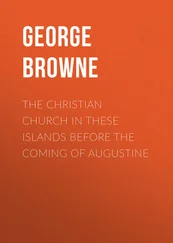Friedrich Bente - Historical Introductions to the Symbolical Books of the Evangelical Lutheran Church
Здесь есть возможность читать онлайн «Friedrich Bente - Historical Introductions to the Symbolical Books of the Evangelical Lutheran Church» — ознакомительный отрывок электронной книги совершенно бесплатно, а после прочтения отрывка купить полную версию. В некоторых случаях можно слушать аудио, скачать через торрент в формате fb2 и присутствует краткое содержание. ISBN: , Жанр: foreign_antique, foreign_prose, на английском языке. Описание произведения, (предисловие) а так же отзывы посетителей доступны на портале библиотеки ЛибКат.
- Название:Historical Introductions to the Symbolical Books of the Evangelical Lutheran Church
- Автор:
- Жанр:
- Год:неизвестен
- ISBN:http://www.gutenberg.org/ebooks/26909
- Рейтинг книги:3 / 5. Голосов: 1
-
Избранное:Добавить в избранное
- Отзывы:
-
Ваша оценка:
- 60
- 1
- 2
- 3
- 4
- 5
Historical Introductions to the Symbolical Books of the Evangelical Lutheran Church: краткое содержание, описание и аннотация
Предлагаем к чтению аннотацию, описание, краткое содержание или предисловие (зависит от того, что написал сам автор книги «Historical Introductions to the Symbolical Books of the Evangelical Lutheran Church»). Если вы не нашли необходимую информацию о книге — напишите в комментариях, мы постараемся отыскать её.
Historical Introductions to the Symbolical Books of the Evangelical Lutheran Church — читать онлайн ознакомительный отрывок
Ниже представлен текст книги, разбитый по страницам. Система сохранения места последней прочитанной страницы, позволяет с удобством читать онлайн бесплатно книгу «Historical Introductions to the Symbolical Books of the Evangelical Lutheran Church», без необходимости каждый раз заново искать на чём Вы остановились. Поставьте закладку, и сможете в любой момент перейти на страницу, на которой закончили чтение.
Интервал:
Закладка:
In 1535, at the Diet of Smalcald, it was agreed that new members entering the Smalcald League should promise "to provide for such teaching and preaching as was in harmony with the Word of God and the pure teaching of our [Augsburg] Confession." According to the Pomeranian Church Order which Bugenhagen drew up in 1535, pastors were pledged to the Augsburg Confession and the Apology thereof. Capito, Bucer, and all others who took part in the Wittenberg Concord of 1536, promised, over their signatures, "to believe and to teach in all articles according to the Confession and the Apology." ( Corpus Reformatorum, opp. Melanthonis, 3, 76.) In 1540, at Goettingen, John Wigand promised to accept the Augsburg Confession and its Apology, and to abide by them all his life. "And," he continued, "if I should be found to do otherwise or be convicted of teaching and confessing contrary to such Confession and Apology, then let me, by this signature, be condemned and deposed from this divine ministry. This do I swear, so help me God." Also at Goettingen, Veit Pflugmacher vowed, in 1541, that he would preach the Gospel in its truth and purity according to the Augsburg Confession and the contents of the postils of Anton Corvinus. He added: "Should I be found to do otherwise and not living up to what has been set forth above, then shall I by such act have deposed myself from office. This do I swear; so help me God."
In 1550 and 1552, Andrew Osiander attacked the oath of confession which was in vogue at Wittenberg, claiming it to be "an entanglement in oath-bound duties after the manner of the Papists." "What else," said he, "does this oath accomplish than to sever those who swear it from the Holy Scriptures and bind them to Philip's doctrine? Parents may therefore well consider what they do by sending their sons to Wittenberg to become Masters and Doctors. Money is there taken from them, and they are made Masters and Doctors. But while the parents think that their son is an excellent man, well versed in the Scriptures and able to silence enthusiasts and heretics, he is, in reality, a poor captive, entangled and embarrassed by oath-bound duties. For he has abjured the Word of God and has taken an oath on Philip's doctrine." Replying to this fanatical charge in 1553, Melanchthon emphasized the fact that the doctrinal pledges demanded at Wittenberg had been introduced chiefly by Luther, for the purpose of "maintaining the true doctrine." "For," said Melanchthon, "many enthusiasts were roaming about at that time, each, in turn, spreading new silly nonsense, e. g. , the Anabaptists, Servetus, Campanus, Schwenckfeld, and others. And such tormenting spirits are not lacking at any time ( Et non desunt tales furiae ullo tempore )." A doctrinal pledge, Melanchthon furthermore explained, was necessary "in order correctly to acknowledge God and call upon Him to preserve harmony in the Church, and to bridle the audacity of such as invent new doctrines." ( C.R. 12, 5.)
II. The Three Ecumenical or Universal Symbols
8. Ecumenical Symbols
The Ecumenical (general, universal) Symbols were embodied in the Book of Concord primarily for apologetic reasons. Carpzov writes: "The sole reason why our Church appealed to these symbols was to declare her agreement with the ancient Church in so far as the faith of the latter was laid down in these symbols, to refute also the calumniations and the accusations of the opponents, and to evince the fact that she preaches no new doctrine and in no wise deviates from the Church Catholic." ( Isagoge, 37.) For like reasons Article I of the Augsburg Confession declares its adherence to the Nicene Creed, and the first part of the Smalcald Articles, to the Apostles' and Athanasian Creeds. The oath introduced by Luther in 1535, and required of the candidates for the degree of Doctor of Divinity, also contained a pledge on the Ecumenical Symbols. In 1538 Luther published a tract entitled, "The Three Symbols or Confessions of the Faith of Christ Unanimously Used in the Church," containing the Apostles' Creed, the Athanasian Creed, and the Te Deum of Ambrose and Augustine. To these was appended the Nicene Creed.
In the opening sentences of this tract, Luther remarks: "Whereas I have previously taught and written quite a bit concerning faith, showing both what faith is and what faith does, and have also published my Confession [1528], setting forth both what I believe and what position I intend to maintain; and whereas the devil continues to seek new intrigues against me, I have decided, by way of supererogation, to publish conjointly, in the German tongue, the three so-called Symbols, or Confessions, which have hitherto been received, read, and chanted throughout the Church. I would thereby reaffirm the fact that I side with the true Christian Church, which has adhered to these Symbols, or Confessions, to the present day, and not with the false, vainglorious church, which in reality is the worst enemy of the true Church, having introduced much idolatry beside these beautiful confessions." (St. L. 10, 993; Erl. 23, 252.) Luther's translation of the Ecumenical Symbols, together with the captions which appeared in his tract, were embodied in the Book of Concord. The superscription, "Tria Symbola Catholica seu Oecumenica," occurs for the first time in Selneccer's edition of the Book of Concord of 1580. Before this, 1575, he had written: "Quot sunt Symbola fidei Christianae in Ecclesia? Tria sunt praecipua quae nominantur oecumenica, sive universalia et authentica, id est, habentia auctoritatem et non indigentia demonstratione aut probatione, videlicet Symbolum Apostolicum, Nicaenum et Athanasianum." (Schmauk, Confessional Principle, 834.)
9. The Apostles' Creed
The foundation of the Apostles' Creed was, in a way, laid by Christ Himself when He commissioned His disciples, saying, Matt. 28, 19. 20: "Go ye therefore and teach all nations baptizing them in the name of the Father, and of the Son, and of the Holy Ghost: teaching them to observe all things whatsoever I have commanded you." The formula of Baptism here prescribed, "In the name of the Father, and of the Son, and of the Holy Ghost," briefly indicates what Christ wants Christians to be taught, to believe, and to confess. And the Apostles' Creed, both as to its form and contents, is evidently but an amplification of the trinitarian formula of Baptism. Theo. Zahn remarks: "It has been said, and not without a good basis either, that Christ Himself has ordained the baptismal confession. For the profession of the Triune God made by the candidates for Baptism is indeed the echo of His missionary and baptismal command reechoing through all lands and times in many thousand voices." ( Skizzen aus dem Leben der Kirche, 252.)
But when and by whom was the formula of Baptism thus amplified? – During the Medieval Ages the Apostles' Creed was commonly known as "The Twelve Articles," because it was generally believed that the twelve apostles, assembled in joint session before they were separated, soon after Pentecost drafted this Creed, each contributing a clause. But, though retained in the Catechismus Romanus, this is a legend which originated in Italy or Gaul in the sixth or seventh (according to Zahn, toward the end of the fourth) century and was unknown before this date. Yet, though it may seem more probable that the Apostles' Creed was the result of a silent growth and very gradual formation corresponding to the ever-changing environments and needs of the Christian congregations, especially over against the heretics, there is no sufficient reason why the apostles themselves should not have been instrumental in its formulation, nor why, with the exception of a number of minor later additions its original form should not have been essentially what it is to-day.
Читать дальшеИнтервал:
Закладка:
Похожие книги на «Historical Introductions to the Symbolical Books of the Evangelical Lutheran Church»
Представляем Вашему вниманию похожие книги на «Historical Introductions to the Symbolical Books of the Evangelical Lutheran Church» списком для выбора. Мы отобрали схожую по названию и смыслу литературу в надежде предоставить читателям больше вариантов отыскать новые, интересные, ещё непрочитанные произведения.
Обсуждение, отзывы о книге «Historical Introductions to the Symbolical Books of the Evangelical Lutheran Church» и просто собственные мнения читателей. Оставьте ваши комментарии, напишите, что Вы думаете о произведении, его смысле или главных героях. Укажите что конкретно понравилось, а что нет, и почему Вы так считаете.












